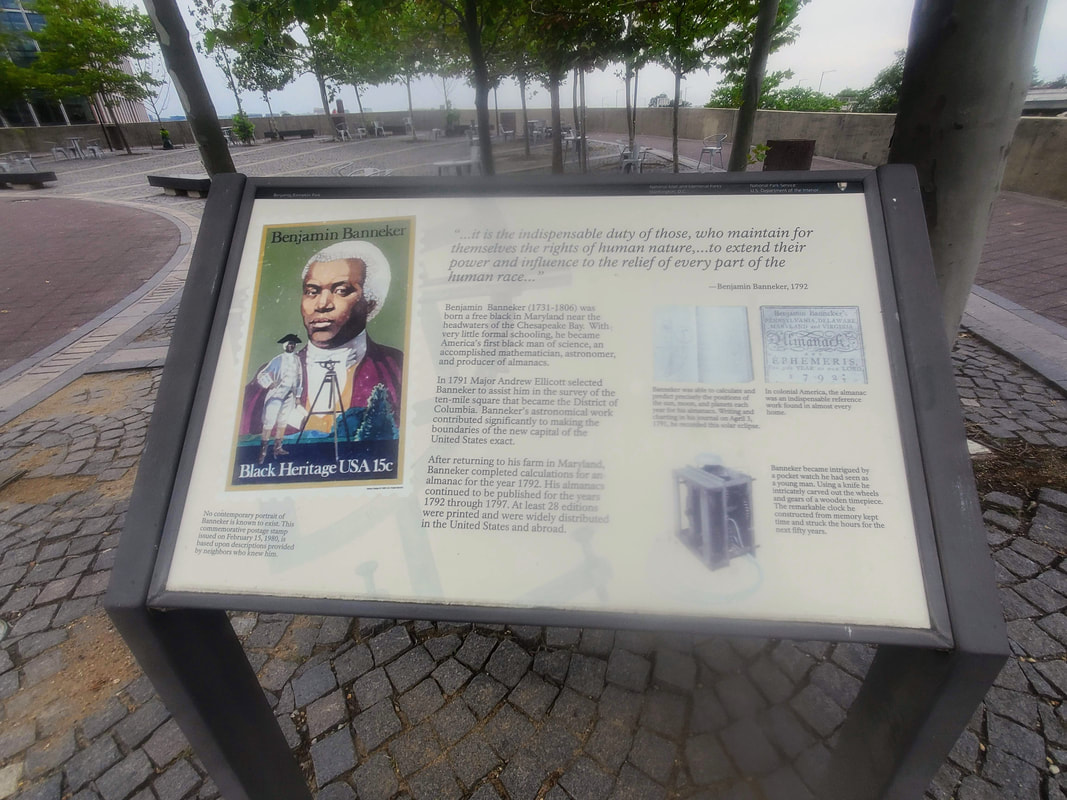|
Cool and unexpected places for Black history are all around you There are are some that believe places like the National Museum of African American History and Culture and the Martin Luther King, Jr. memorial are the be-all-end-all of where to go for Black history, but that's not true. Black history is embedded in DC's DNA in places that are obvious and many others that are not. From Benjamin Banneker Park to Frederick Douglass' first home in DC, here are some sites worth the hike to discover how significant African American contributions have been not only in Washington, D.C., but in the nation. Rosa Park's DC Home Immortalized in the James Patterson thriller Four Blind Mice, the eccentric Mansion on O Street, a hotel near Dupont Circle, was for more than a decade the home of civil rights activist Rosa Parks. It was at the O Street Mansion that Parks met with heads of state and other dignitaries, as well as entertainers, and friends, and occasionally hosted formal Sunday Gospel Brunches, for example one in December 1998 to commemorate the 43rd anniversary of the start of the Montgomery bus boycott and another the next June to mark her receipt of the Congressional Gold Medal.Today the mansion—with its off-the-wall decorations (literally, everything on the walls is for sale) and secret doorways—is open for tours. Frederick Douglass' First Home in DC Frederick Douglass, African-American abolitionist, orator, writer, and statesman, lived at 316 A ST NE Street until 1877, when he moved to Cedar Hill in Anacostia, which is now a national historic site. The A Street property has changed hands several times since. It was the first home of the Smithsonian’s National Museum of African Art, and was later owned by the the National Association for Home Care & Hospice, which hosted a lightly visited museum dedicated to Douglass there before offering it for sale in late 2017. It's currently on the market for $5 million if you're interested. Duke Ellington's Birthplace Jazz legend Edward Kennedy “Duke” Ellington was born at 2121 Ward Place (formerly Ida Place). His birthplace is long gone; branch of the U.S. Postal Service now occupies the spot on the renamed Ward Place. A plaque denoting Ellington’s birth was installed on the building in 1990, and a mural by renowned DC illustrator Aniekan Udofia, recognizing Ellington’s connection to the city, was added in November of 2011. Rose Park Tennis Courts Georgetown's Rose Park was one of the first integrated parks in the District. The park was frequented by tennis greats. Sisters Margaret Peters and Roumania Peters Walker, who lived just around the corner from the courts at 2710 O Street, N.W. The sisters had their start at the courts and played regularly from the 1930s through the 1980s. They played tennis with Gene Kelly on the Rose Park tennis court in the 1940s. Affectionately known as “Pete” and “Repeat” Peters, the sisters made history with their doubles record from the 1930s to the 1950s. At a time when African Americans were not allowed to compete against whites, the Peters sisters played in the American Tennis Association, which was created specifically to give blacks a forum to play tennis competitively. Between 1938–1941 and 1944–1953 they won 14 ATA doubles championships, a record which has not yet been broken. The tennis courts at Rose Park were renamed in 2015. to honor their contributions to the game of tennis. Benjamin Banneker Park Designed by renowned landscape architect Daniel Urban Kiley in 1970, Benjamin Banneker Park in Southwest provides panoramic views of Washington and the surrounding area. The site is culturally significant as the first public space in Washington named for an African American. Benjamin Banneker was an African-American mathematician, astronomer, inventor and scientist who worked with L’Enfant and Andrew Ellicott to map out the city of Washington. Banneker became a mathematician, astronomer, inventor, and writer. born in 173, Bannekar was Largely self-taught with a keen interest in match and science. In 1791, Banneker was hired to assist L’Enfant and Andrew Ellicott in surveying the nation's capital. As Ellicott's assistant, Banneker was responsible for the care and operation of the astronomical equipment that was used to survey the 10-mile square area that became the District of Columbia. "28 Blocks" Mural Despite the towering image of Lincoln in the background, this mural in the NoMa neighborhood isn’t intended to honor him. ’28 Blocks’ tells the story of the the sons and grandsons of slaves, first-and-second generation freemen, African-Americans who quarried each block of the 19’ high, 150-ton marble sculpture of the Lincoln Memorial into place. The name of the mural is meant to call back to the 28 blocks of marble used to build the memorial. Beneath the mural is a quote from African-American social reformer, abolitionist, and writer Frederick Douglass: “Without culture there can be no growth. . . . Without action, no progress. And without conflict, no victory.” Curious? There's more!
0 Comments
Leave a Reply. |
AboutLook up, down, and all around. Adventures can be found everywhere -- if you're curious enough to look. k for it Categories
All
|










 RSS Feed
RSS Feed